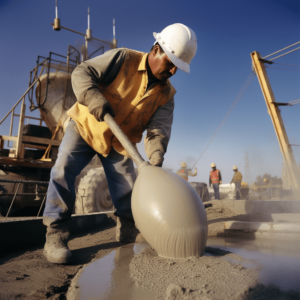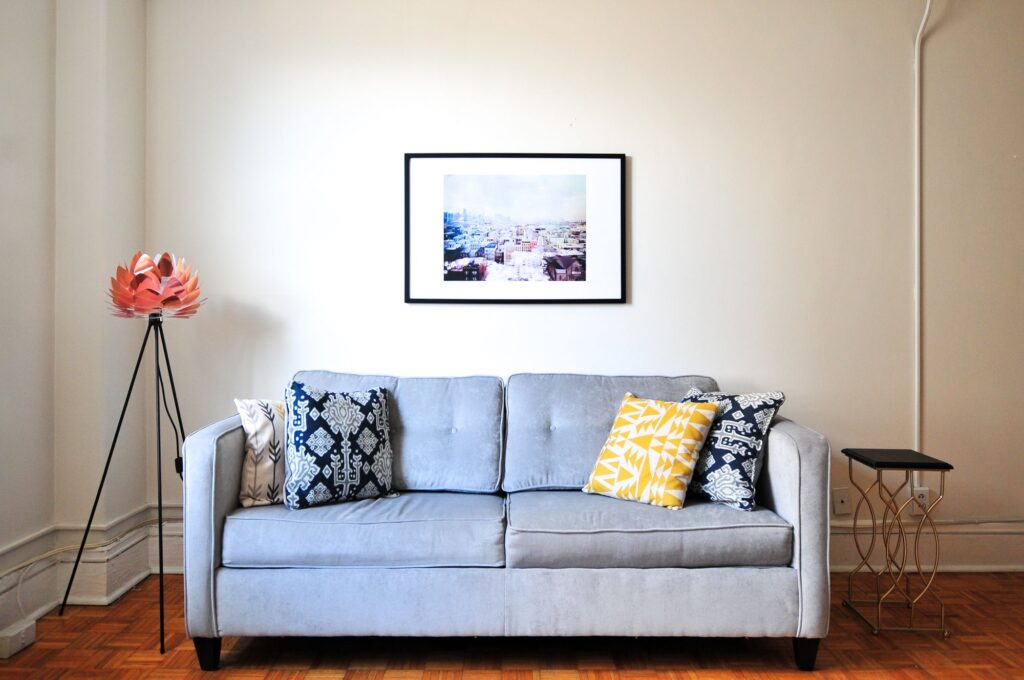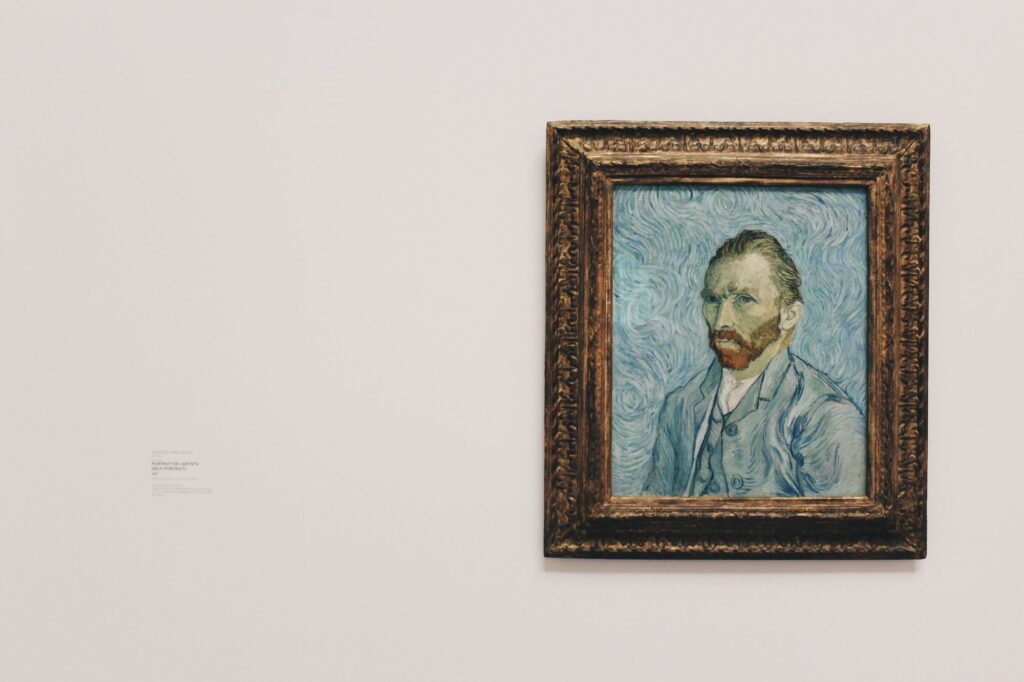
Welcome to this blog post about the art of concrete construction, where we’ll dive into the techniques and processes involved in creating strong and durable structures. Concrete is an incredibly versatile material used in everything from skyscrapers to bridges to sidewalks. But to truly master the art of concrete construction, you need to understand the science behind it and be able to put that knowledge into practice.
Let’s start with the basics. Concrete is made up of three main components: cement, water, and aggregate (usually sand and gravel). When these ingredients are mixed together, they form a paste that hardens and binds everything together. The key to making strong and durable concrete is getting the proportions right and ensuring that everything is mixed thoroughly.
But before we get into the nitty-gritty of concrete mixing, let’s introduce our characters. We have three main players in our story: Dave, the experienced Montreal concrete contractor; Sarah, the eager apprentice; and Mike, the skeptical homeowner. As we explore the art of concrete construction, we’ll follow their journey and learn from their experiences.
Dave is a grizzled veteran of the construction industry with decades of experience working with concrete. Sarah is his apprentice, a young woman with a passion for learning and a unquenchable thirst for knowledge. And Mike is the homeowner, who’s looking to build a new patio in his backyard but isn’t quite sure what he’s getting himself into.
Dave starts by explaining the importance of getting the proportions right when mixing concrete. “You need to make sure you have the right amount of cement, water, and aggregate,” he says. “Too much of one ingredient or not enough of another can throw everything off.”
Sarah nods eagerly, taking notes as she listens. “And how do you know when you’ve got the right mix?” she asks.
“That’s where experience comes in,” Dave replies. “You get a feel for it after doing it for so long. But there are also some guidelines you can follow. For example, you want to aim for a water-to-cement ratio of about 0.5 to 0.6. Too much water and your concrete will be weak and prone to cracking. Too little water, and it won’t mix properly.”
Mike looks skeptical. “How do I know you’re not just making this up?” he asks.
Dave chuckles. “I’ve been doing this for over 30 years, buddy. Trust me, I know what I’m talking about.”
Once they’ve got the proportions right, it’s time to mix everything together. This is where things can get a little tricky, especially if you’re not using a concrete mixer. Dave shows Sarah and Mike how to mix the concrete by hand, using a shovel and a wheelbarrow.
“It’s all about making sure everything is evenly mixed,” Dave says. “You don’t want clumps of cement or aggregate in one spot and water in another. It needs to be consistent throughout.”
As they mix the concrete, Dave explains the importance of timing. “You’ve got a certain amount of time before the concrete starts to harden,” he says. “You need to make sure you get it poured and smoothed out before that happens.”
Sarah nods, taking mental notes. “And what happens if you don’t get it done in time?” she asks.
“It can start to set up and become difficult to work with,” Dave explains. “That’s why it’s important to have a plan and work quickly.”
Mike looks worried. “What if we mess up?” he asks.
Dave pats him on the back. “It happens to the best of us,” he says. “But that’s why you’ve got an experienced contractor like me on your side. We’ll make sure everything goes smoothly.”
With the concrete mixed and ready to go, it’s time to pour it. Dave shows Sarah and Mike how to pour the concrete in a way that ensures it’s evenly distributed and fills all the necessary areas. He also emphasizes the importance of using the right tools to smooth it out and make it level.
Once the concrete is poured and smoothed, it’s time to let it cure. This is where patience comes in – concrete can take anywhere from a few days to a few weeks to fully cure, depending on the weather conditions and other factors.
During the curing process, Dave and Sarah keep a close eye on the concrete, making sure it’s staying moist and not cracking. Mike watches nervously from the sidelines but eventually starts to relax as he sees the patio taking shape.
As the days pass, Dave and Sarah begin to add finishing touches to the patio, such as stamping and staining, to give it a unique look. Mike is impressed with the final product and thanks Dave for his expertise and hard work.
“Well, that’s the art of concrete construction,” Dave says, wiping sweat from his brow. “It takes experience, knowledge, and patience to get it just right. But when you do, the results speak for themselves.”
Sarah nods in agreement. “I’ve learned so much from this experience,” she says. “I can’t wait to apply what I’ve learned to future projects.”
Mike shakes Dave’s hand. “Thanks again for all your help,” he says. “I couldn’t have done it without you.”
Dave smiles. “That’s what I’m here for,” he says. “To help people create something that will last for years to come.”
As the group stands back and admires their work, Dave takes the opportunity to emphasize the importance of regular maintenance to ensure the longevity of the patio.
“You’ll want to make sure you clean it regularly and seal it every few years,” he explains. “That will help protect it from the elements and keep it looking great for years to come.”
Mike nods, taking mental notes. “Thanks for the tip,” he says. “I’ll make sure to keep up with the maintenance.”
The group spends a few more minutes admiring the patio before saying their goodbyes. Sarah takes one last look, feeling a sense of pride and accomplishment at what they’ve created.
As she walks away, she thinks about all the things she’s learned from Dave and the importance of passing that knowledge on to others. She’s excited to continue her apprenticeship and become a skilled concrete contractor in her own right.
And that’s the art of concrete construction – a combination of science, experience, and creativity that results in strong and durable structures that can stand the test of time. Whether you’re building a patio, a bridge, or a skyscraper, mastering the art of concrete construction is essential for creating something that will last for years to come.

 Arts have always been at the forefront of adoption when it comes to new technologies. From the invention of the printing press to the introduction of new mediums like photography and film, artists have always embraced new ways to create and share their work with the world. In recent years, virtual reality (VR) and augmented reality (AR) have emerged as powerful new tools for artists, opening up entirely new possibilities for creation and connection. Here are five amazing examples of how VR and AR are being used in the arts today:
Arts have always been at the forefront of adoption when it comes to new technologies. From the invention of the printing press to the introduction of new mediums like photography and film, artists have always embraced new ways to create and share their work with the world. In recent years, virtual reality (VR) and augmented reality (AR) have emerged as powerful new tools for artists, opening up entirely new possibilities for creation and connection. Here are five amazing examples of how VR and AR are being used in the arts today:
 In many homes, the family portrait is a treasured possession. It captures a moment in time that will never be repeated, and it preserves the memories of loved ones who may no longer be with us. A family portrait can tell a story about our ancestors and help us to feel connected to them. It can also remind us of our own history and the people who have shaped our lives.
In many homes, the family portrait is a treasured possession. It captures a moment in time that will never be repeated, and it preserves the memories of loved ones who may no longer be with us. A family portrait can tell a story about our ancestors and help us to feel connected to them. It can also remind us of our own history and the people who have shaped our lives.